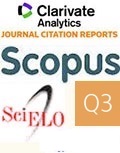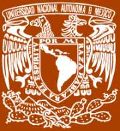|
Boletín de la Sociedad Geológica Mexicana Volumen 76, núm. 2, A040324, 2024 http://dx.doi.org/10.18268/BSGM2024v76n2a040324
|
 |
Los objetos de metal de Tamtoc y Rancho Aserradero: Un análisis morfológico y de composición
The metal objects of Tamtoc and Rancho Aserradero: A morphological and compositional analysis
Niklas Schulze1,*, José Luis Ruvalcaba Sil2
1 FCSyH, Universidad Autónoma de San Luis Potosí, Av. Industrial #101-A, Fracc. Talleres, 78399, San Luis Potosí, SLP.
2 Laboratorio Nacional de Ciencias para la Investigación y la Conservación del Patrimonio Cultural (LANCIC) Instituto de Física, Universidad Nacional Autónoma de México. Circuito de Investigación, Ciudad Universitaria, 04510 Coyoacán, CDMX, México.
* Autor para correspondencia: (N. Schulze) This email address is being protected from spambots. You need JavaScript enabled to view it.
Cómo citar este artículo:
Schulze, N., Ruvalcaba Sil, J.L., 2024, Los objetos de metal de Tamtoc y Rancho Aserradero: Un análisis morfológico y de composición: Boletín de la Sociedad Geológica Mexicana, 76 (2), A040324. http://dx.doi.org/10.18268/BSGM2024v76n2a040324
Manuscrito recibido: 6 de Noviembre de 2023; manuscrito corregido: 1 de Febrero de 2024; manuscrito aceptado: 20 de Febrero de 2024.
ABSTRACT
This article presents a study of 52 metallic artifacts made of gold and copper from the archaeological sites of Tamtoc and Rancho Aserradero, both located in the Huastec region of San Luis Potosí, Mexico. These objects served both utilitarian (e.g., needles, fish hooks, and axes) and ornamental (e.g., rings, beads, and bells) purposes. The objective of this paper is to provide a detailed description of the artifacts, present the results of an elemental, non-invasive, and non-destructive in situ analysis performed using X-ray fluorescence, reconstruct the manufacturing processes, and compare these findings with similar objects from other contemporary Mesoamerican regions. This research generated new data and knowledge about the use of metals and alloys in the Huastec region, the technological and cultural decisions behind the creation of these objects, and the exchange networks that facilitated their distribution. The examination of the 52 pieces revealed significant diversity in morphology and elemental composition, which limited the cultural interpretations due to the small sample size. Nevertheless, our results indicate that the studied sites were part of an extensive exchange network with access to metallic objects from the central and western regions of Mesoamerica, as well as Oaxaca and/or Central America.
Keywords: copper, gold, pre-Hispanic metallurgy, XRF, manufacturing, Huasteca.

